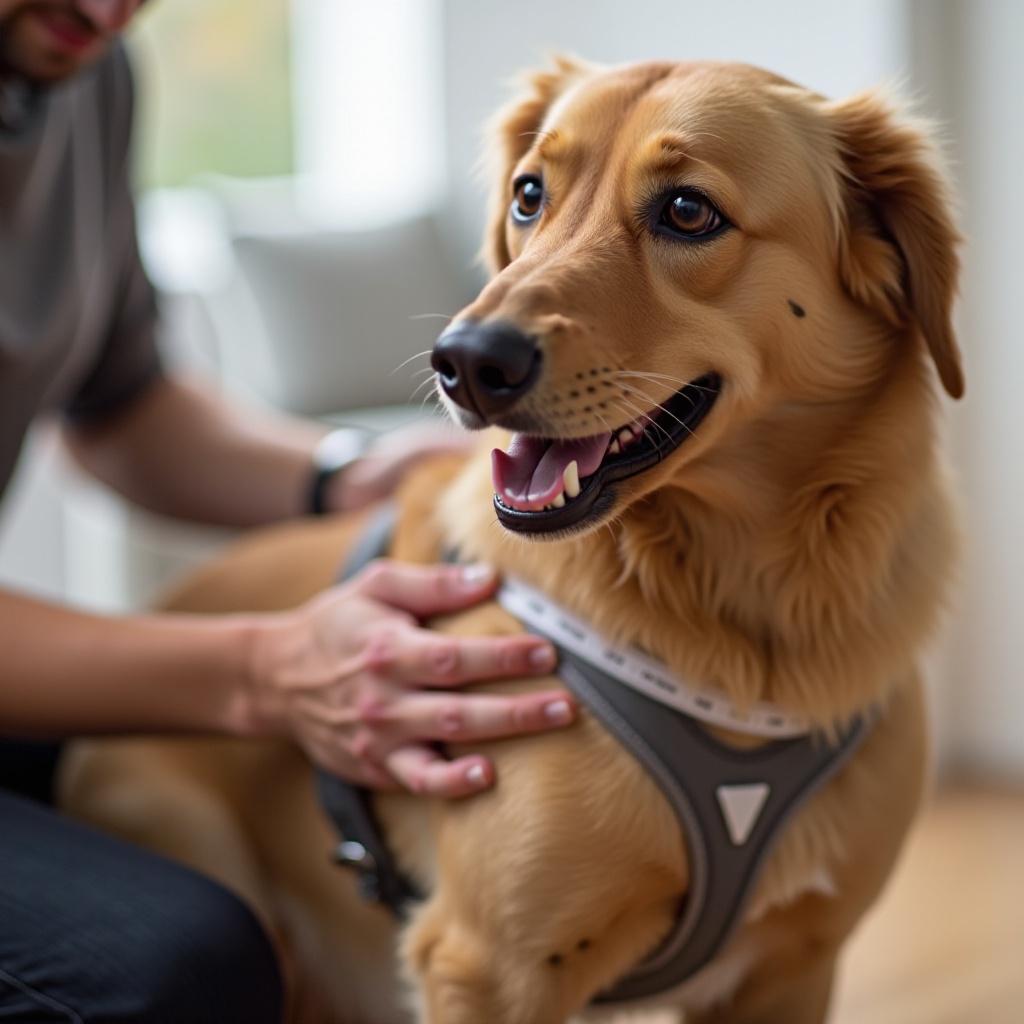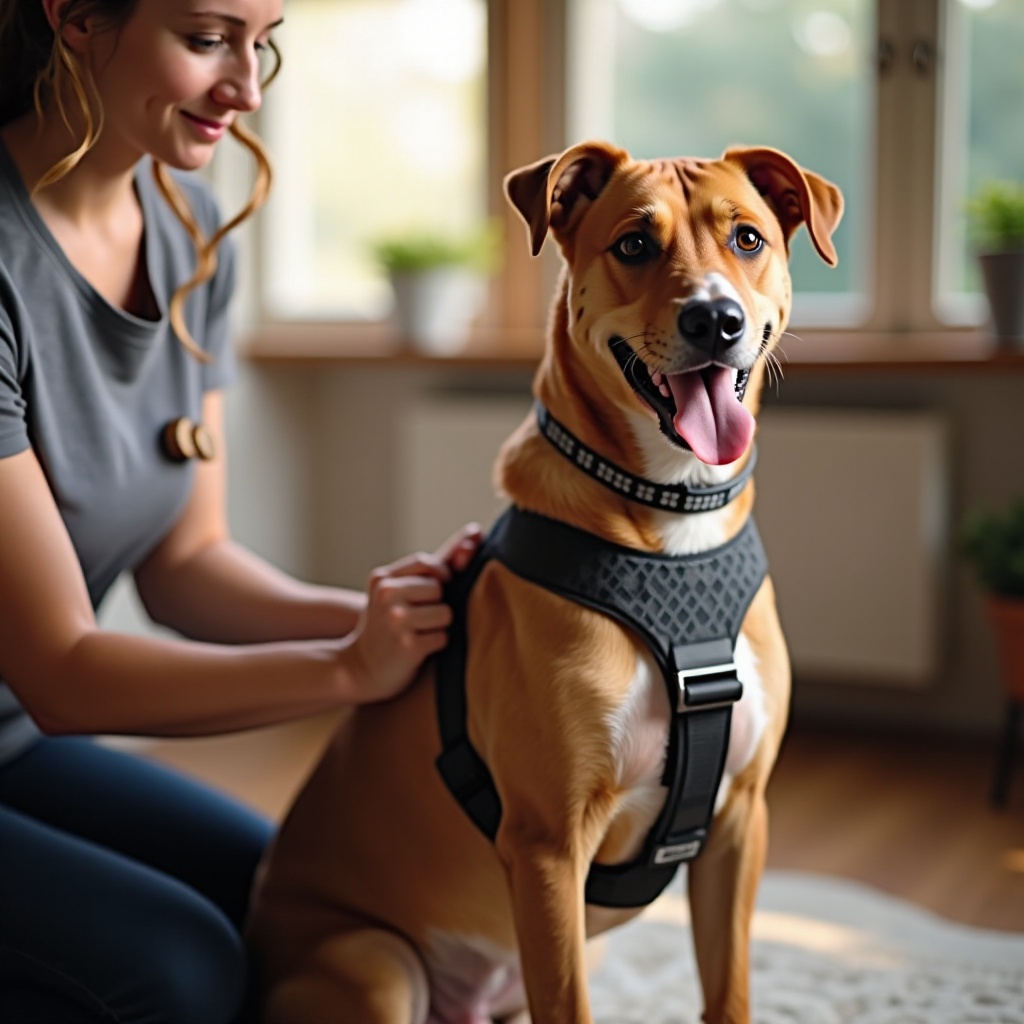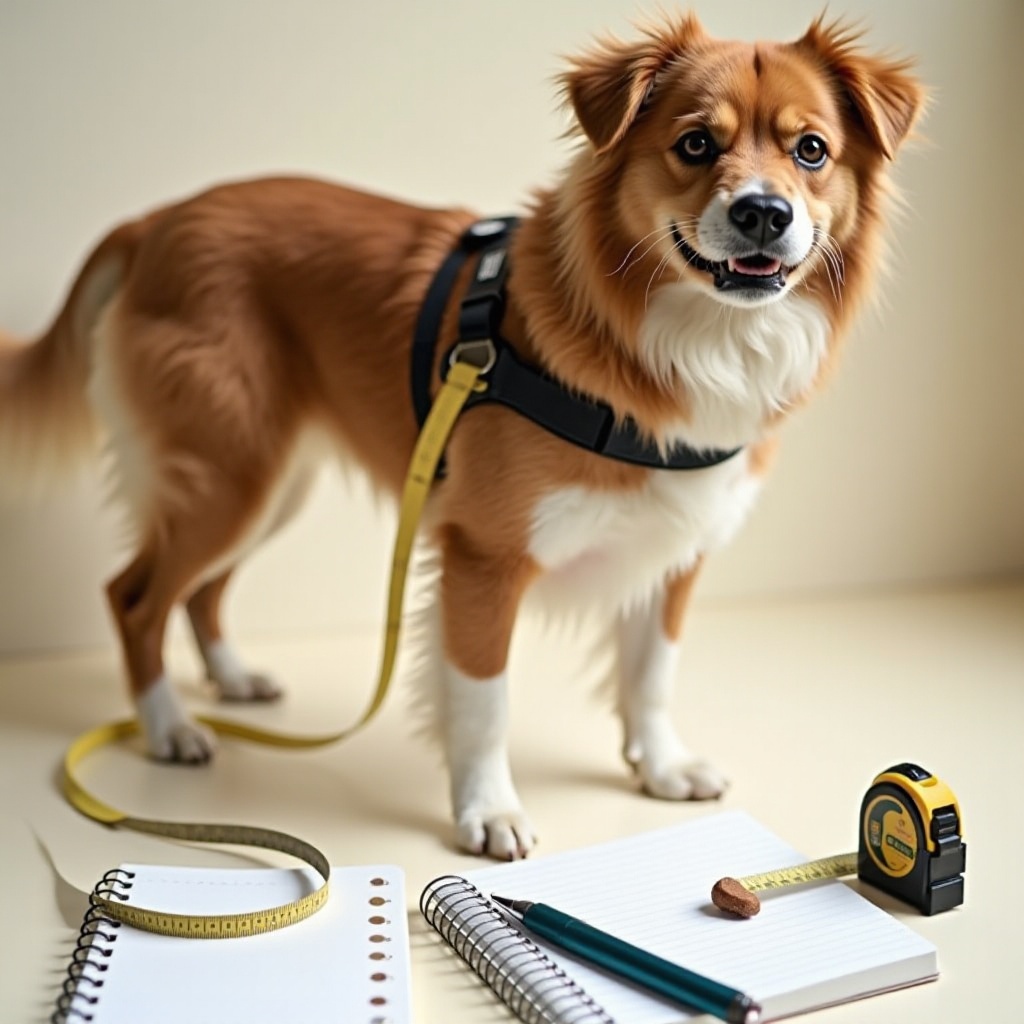Introduction
Measuring a dog for a harness might seem simple, but it’s essential to ensure a proper fit for your furry friend’s comfort and safety. A well-fitted harness lies at the core of your dog’s wellbeing, preventing potential injuries and providing a secure way to control your pup during walks. This comprehensive guide will walk you through the process, tools, and tips for accurate measurement to find the harness that best suits your dog’s needs.

Understanding the Importance of Proper Measurement
An improperly fitted harness can lead to many issues, ranging from discomfort to health problems. An ill-fitting harness can cause chafing, restrict movement, and even impair breathing. It can also be the cause of added stress, leading to a negative walking experience for both you and your dog. Ensuring a proper fit is critical for your dog’s physical health and mental well-being.
A good harness offers more control, reducing the risk of your dog slipping out and potentially running into dangerous situations. Proper measurement is especially crucial for growing puppies, senior dogs, and breeds with unique body shapes. This ensures the harness provides the necessary support and avoids putting unnecessary strain on any part of your dog’s body.

Tools You Need for Measuring Your Dog
Before you start, gather the necessary tools to ensure an accurate measurement. Here are the essentials:
- A Flexible Measuring Tape: This is the most reliable tool for measuring your dog’s body parts accurately.
- A Piece of String and a Ruler: If you don’t have a measuring tape, a piece of string can serve as a substitute. Measure the string with a ruler after taking the measurements on your dog.
- Notebook and Pen: Keep these handy to note your dog’s measurements.
Having the right tools ready will help you get precise measurements and make the process smooth and stress-free.

Preparing Your Dog for Measurement
Measuring your dog is easier when they are calm and relaxed. Here are a few tips to get your dog ready for the process:
- Choose a Quiet Location: Find a quiet and familiar place where your dog feels secure.
- Use Treats and Positive Reinforcement: Treats can help keep your dog still and make the process enjoyable.
- Gentle Handling: Handle your dog gently and speak in a soothing tone to keep them relaxed.
- Seek Assistance if Needed: If your dog is particularly fidgety, enlist the help of someone to hold your dog while you measure.
By creating a calm environment, you’ll ensure the process is as stress-free as possible for both you and your dog.
Step-by-Step Guide to Measuring Your Dog
Now that we understand the importance of proper measurement and have our tools ready, it’s time to measure your dog. Follow these steps carefully to ensure accurate measurements:
Measuring the Chest Girth
- Find the Widest Part of the Ribcage: This is usually located right behind the front legs.
- Wrap the Measuring Tape Around the Ribcage: Make sure that the tape is snug but not tight.
- Note the Measurement: Ensure the tape is level and note the measurement where it meets the start of the tape.
Measuring the Neck Circumference
- Locate the Base of the Neck: This is where the neck meets the body.
- Wrap the Measuring Tape Around the Neck: Similar to the chest, the tape should be snug but not constricting.
- Record the Measurement: Ensure you can fit two fingers between the tape and your dog’s neck for comfort.
Measuring the Back Length
- Determine the Start and End Points: Measure from the base of the neck to the start of the tail.
- Use a Ruler or Measuring Tape: Ensure your dog is standing straight while you measure the back length.
- Note Down the Measurement: Keep the tape aligned to get an accurate measurement.
Common Mistakes to Avoid
While measuring your dog, avoid these common mistakes to ensure you get the most accurate results:
- Measuring a Fidgety Dog: Ensure your dog is calm to avoid inaccurate measurements caused by movement.
- Using a Rigid Tape Measure: Always use a flexible tape to conform to your dog’s body shape.
- Ignoring Measurement Instructions: Follow each step and instructions carefully to avoid incorrect sizing.
By keeping these common mistakes in mind, you’ll ensure that your harness fits your dog perfectly.
Choosing the Right Harness Based on Measurements
With your dog’s measurements in hand, you can now choose the right harness. Consider the following when selecting a harness:
- Match Measurements to Harness Size Chart: Each manufacturer may have different sizing charts. Use your dog’s measurements to find the best match.
- Adjustability: Look for a harness with adjustable straps to fine-tune the fit.
- Type of Harness: Depending on your dog’s needs, choose a front-clip harness for pulling control, a back-clip for general use, or a dual-clip for versatility.
Choosing the right harness based on accurate measurements ensures your dog is comfortable and safe.
Trying and Adjusting the Harness
Once you have selected the harness, the next step is to try it on and make necessary adjustments:
- Put the Harness on Your Dog: Follow the manufacturer’s instructions to put the harness on correctly.
- Adjust the Straps: Ensure the harness is snug but not tight. You should be able to fit two fingers between the harness and your dog’s body.
- Check for Comfort: Observe your dog’s movements to ensure there’s no chafing or restricted movement.
Making these adjustments will ensure the harness fits your dog securely and comfortably.
Conclusion
Finding the right harness for your dog starts with accurate measurements. By following this guide, you will ensure a proper fit for your dog’s comfort and safety. Remember, a well-fitted harness makes walks enjoyable for both you and your furry friend, enhancing your overall bond.
Frequently Asked Questions
How often should I measure my dog for a harness?
Measure your dog every six months or if you notice any changes in their body, such as weight gain or loss, to ensure the harness still fits comfortably.
What if my dog is between two harness sizes?
If your dog falls between two sizes, opt for the larger size for comfort and adjustability to ensure a secure fit.
Can I use a regular tape measure to measure my dog?
While a regular tape measure can be used, a flexible measuring tape is preferred for more accurate measurements that conform to your dog’s body.
